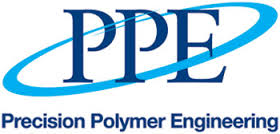Author: Steve Jagels, Precision Polymer Engineering, an IDEX Company, USA
There is a great future for elastomer sealing solutions with a particular emphasis on fugitive emissions for valves and how more advanced materials will be able to reduce these emissions due to a renewed focus on limiting greenhouse gasses and pollutants. Effectively containing these emissions with sealing technology provides environmental benefits, complies with increasing regulatory standards and improves overall work efficiency and safety. Today’s customers are demanding more, and while there may already be some solutions, the sealing industry recognizes that more advanced materials are required with better environmental credentials for future sealing technology. With more experience, sealing experts will be able to bridge the knowledge gaps, helping to inform the valve engineer and guiding the appropriate seal choice.
Limiting Fugitive Emissions
Selecting the correct seal for a valve application can have a major impact on fugitive emission levels, environmental performance and costs. Elastomers and plastics can be used to engineer an entire sealing system; within each of these polymer types, there are chemistries and compounding technologies that will limit the emissions of organics. Engineering experience has enhanced seal integrity so it can withstand pressure and temperature cycling for the lifetime of the valve.
There is a growing interest in low temperature perfluoroelastomers which retain their elasticity in very low temperatures and are inert to more chemical species. Changes to the elasticity of an elastomeric material due to time or physical environment can impact the reliability of a seal, and chemical degradation of an elastomer will change its low temperature performance. It is, therefore, reasonable that a valve with a long maintenance interval will need sealing materials that have little change in properties whether by thermal or chemical processes throughout the service life of the seal. This enables a valve to maintain its ability to limit emissions.
Efficiency and Safety: Meeting Regulatory Standards
Safety is foremost in choosing the ideal sealing solution and today’s customers are looking to meet API and ISO standards for their valves. However, many standards do not directly apply to the seals themselves or are vague, particularly with elastomer seals. In many cases, engineers need to test and validate an entire system and require a partner who will work to ensure the sealing system passes every requirement.
One aspect that is often overlooked is the ease of installation of a seal, whether on new equipment or repair. Sealing experts have to think ahead and anticipate how a technician might work on the equipment in the field or repair shop. Designs should be less complex and materials should be easy to use, providing engineers with confidence. For example, a material with a high ultimate elongation might allow the technician to install the seal without breaking it if it needs to be stretched during the installation procedure. Seals with integrated anti-extrusion devices, such as spring seals, can reduce the components from three pieces to one to prevent installation errors.
How to Pick the Right Seal for your Application
The experience of technical staff plays a key role in picking the optimal sealing solution. Asking the right questions about an application will often pull out details that might go unnoticed but contribute to a problem in the future. In the oil and gas industry, for example, seals may be specified for resistance to crude oil but also be exposed occasionally to methanol during shut downs. The combination of the two different fluids requires different sealing materials to ensure safety and efficiency.
Advanced materials and sealing technology provides environmental benefits, while improving overall work efficiency and safety, as they effectively contain emissions. With ever increasing experience, sealing experts can work with valve engineers to bridge knowledge gaps and guide appropriate seal choice. With today’s technology, it is possible to significantly reduce fugitive emissions to the point where almost all valves should remain in compliance.
If you want to know more Elastomer Sealing Solutions for Fugitive Emissions, please contact the author at s.jagels@idexcorp.com or visit www.prepol.com.
About PPE
Precision Polymer Engineering Ltd (PPE) is a leading provider of high performance O-rings, elastomer moldings and sealing solutions to a diverse range of industries. The company develops novel elastomer materials to meet the most demanding sealing applications including extreme temperatures and chemically aggressive environments. Its markets are global, and include oil & gas industries, semiconductor manufacturing equipment, food and pharmaceutical production, chemical processing, large-bore diesel engines and aerospace.
Founded in 1975, PPE has manufacturing facilities in Europe and the US and sales offices and dealers in the US, Europe and Asia. The company’s success is based on developing sealing solutions that perform in difficult applications, last longer, require less maintenance and deliver the lowest cost of ownership, combined with exceptional levels of customer service and technical support. Precision Polymer Engineering is a Unit of IDEX Corporation and operates alongside FTL Technology and Novotema within the IDEX Sealing Solutions group segment.




